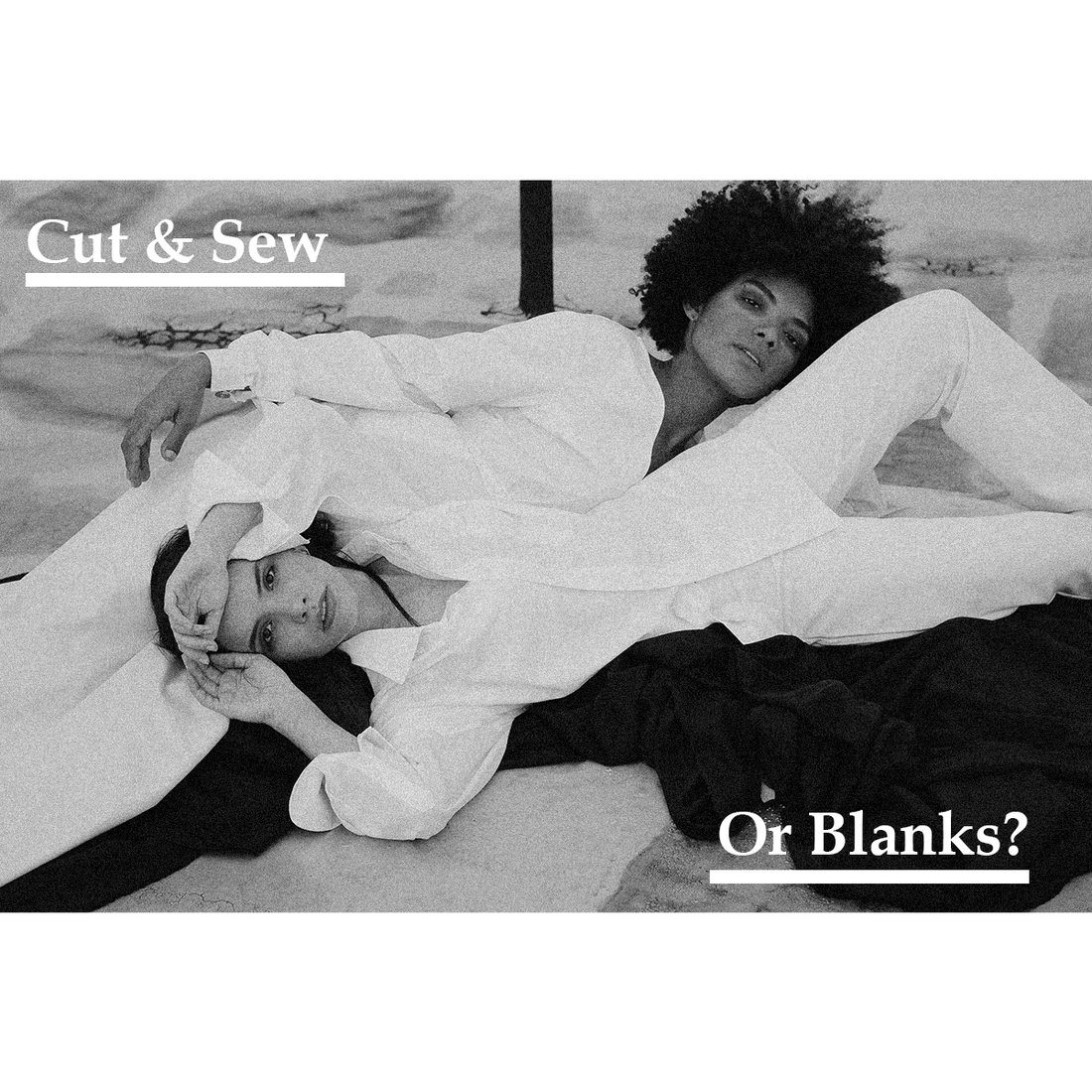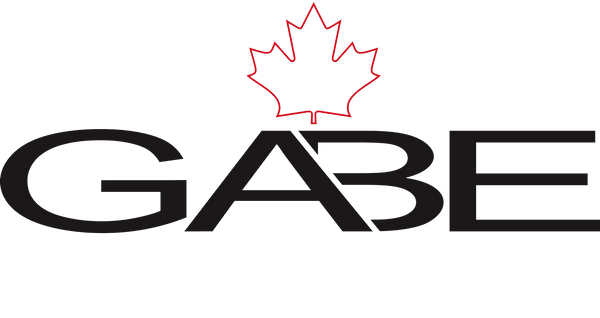
Cut and Sew vs Blank Apparel: Choosing the Perfect Fit for Your Clothing Brand.
Share
Well, you’ve decided to take the leap and start your own clothing line. You have a strong vision. Unique designs you know will be a hit. But now, it’s time to decide how you’ll turn your ideas into real clothing. From your research, you’ve identified two promising approaches. Cut & Sew, and Blank Apparel. So you’re trying to weigh out which choice will help your brand make killer clothes and killer profits.
You’ve come to the right place. Both methods have their own benefits and drawbacks. We’ll help you make the right choice for your clothing business.
Cut and Sew: The Custom Approach
What is the Meaning of Cut and Sew?
Cut and sew refers to the process of creating garments from scratch, with a clothing manufacturer producing the pieces from raw material. The cut and sew process involves first cutting the garments by hand or with an automated cutting machine, then having tailors sew the garments together to match your designs.
Cut and Sew allows you to specify everything from the fabric choice, to the stitching, to the kind of buttons you want.
Advantages of Cut & Sew: Originality, Control, and Quality
- Originality: Cut and sew allows for completely unique designs, setting your clothing apart from competitors using mass-produced garments.
- Control: With cut and sew, you can specify the entire manufacturing process, enabling you to ensure that the final product aligns with your brand’s vision.
- Quality: By overseeing every aspect of production, you can guarantee that your garments meet your quality standards.
In short, cut and sew is about giving you the ability to customize your garment. And, with a good manufacturing partner, you get to have almost total control over the creative process.
Disadvantages of Cut & Sew: Higher Costs and Lead Times
- Higher costs: The customized nature of cut and sew means higher costs for materials, labor, and production.
- Longer Lead times: Creating custom garments takes time, which can result in longer lead times for orders. This can be disadvantageous if you need quick turnaround.
- MOQ: Most manufacturers require you order a minimum amount of units for Cut & Sew. Typically, that minimum is somewhere around 300 units of clothing, but depending on the manufacturer, that number can be much higher. This means Cut & Sew requires your brand to be prepared for a bigger upfront investment.
Ideal Use Case: Cut and sew is perfect for brands that prioritize uniqueness, control, and high-quality products, even if it means higher costs and longer production times.
Blank Apparel: The Ready-to-Go Alternative
Definition
Blank apparel refers to pre-made garments that are ready for customization, via methods like screen printing, sublimation, or embroidery.
Clothing manufacturers produce blank apparel in bulk, making them widely available and easy to source.
Advantages: Affordability, Quick Turnaround, and Accessibility
Since blank apparel is pre-produced, it’s typically more affordable than cut-and-sew clothing. Blank clothing often comes at a lower price point than custom cut-and-sew items. This allows clothing brands entering a new product space or the market as a whole to keep their initial investment low while assessing demand.
Blank apparel can also be a huge time-saver. The production timeline for cut-and-sew garments can be lengthy, as they require custom pattern-making, fabric sourcing, and skilled labor. In contrast, blank clothing is readily available and can be easily purchased at wholesale prices. This shorter lead time allows new clothing brands to get their products to market faster.
Blank apparel is also very scalable. As your clothing brand grows, so will your need for larger quantities of inventory. Blank clothing suppliers are well-equipped to handle increases in demand, providing you the scalability necessary to expand your business.
Disadvantages: Limited Customization
Limited Room for Customization: The main disadvantage of using blank clothing is its constraints on creativity. Since blank garments come in predetermined styles, shapes, and sizes, they leave less room for unique design elements compared to cut-and-sew garments. This could result in a more generic appearance, which may make it more challenging for your brand to stand out.
Restricted fabric and material choices: Blank clothing suppliers usually offer a limited range of fabric and material options. This can be a disadvantage for brands looking to use specific fabrics, textures, or patterns that are not readily available in in pre-made apparel.
Sizing limitations: Blank garments are often only available in standard sizes. If you’re a plus-sized brand or creating for a niche market, it may be difficult to cater to the needs of your customers. This can make for a less inclusive product offering and potentially limit your brand’s reach.
Ideal Use Case: Blank apparel is ideal for brands looking to stay low on overhead and those looking to quickly launch their clothing lines.
Making the Right Choice for Your Brand
Factors to Consider
When deciding between cut and sew and blank apparel, consider the following factors:
- Budget: Can you afford the higher costs associated with cut and sew garments?
- Timeline: Do you have the time to wait for custom garments to be produced, or do you need a faster turnaround?
- Customization Needs: How important is it for your brand to have completely unique designs and full control over the manufacturing process?
- Quality Expectations: Are you willing to compromise on quality to save costs, or is maintaining a high standard of quality non-negotiable for your brand? There are premium blank options available on the market, however, finding them requires some research and sampling, since garment quality varies between different manufacturers. Cut & Sew may offer more quality control, but requires you to shoulder the risk of greater upfront investment.
Supreme: The Textbook Case Study For Using Clothing Blanks Successfully
Supreme is an iconic streetwear brand. The brand has gained global recognition for its unique approach to fashion, combining skate culture, street style, and limited-edition releases. Supreme's success can be partly attributed to its strategic use of clothing blanks, which has enabled the brand to establish a distinct identity, maintain a cult-like following, and generate considerable revenue with relatively low overhead costs.
To achieve this, Supreme primarily utilized Hanes and American Apparel blanks for its T-shirts, hoodies, and other garments. By screen printing or embroidering the iconic Supreme box logo and other distinctive designs onto the blanks, the brand transformed generic garments into highly sought-after fashion items. This simple yet effective branding technique allowed Supreme to distinguish itself from competitors and create a strong brand identity.
Tips for Making the Best Decision
When weighing the benefits and drawbacks of cut and sew vs clothing blanks for your brand, keep these tips in mind:
- Start small: If you're unsure which method to choose, consider starting with a small collection of apparel to test your market and gather customer feedback.
- Work with trusted suppliers: Whether you opt for cut-and-sew or blanks partnering with a reputable clothing manufacturer ensures will ensure you receive quality products that match your brand’s standards
- Adapt as needed: As your clothing brand grows, you may find it necessary to switch between cut and sew and blank apparel for various product offerings, or even utilize a combination of both methods. Be willing to adapt to meet the changing needs of your business.
Lastly, it’s always a good idea to look into what other businesses are doing. It’s unlikely you’re alone in your niche. Finding a similar brand in your space and learning how they source their products can give you a better understanding of which option makes the most sense for your market. And don’t discount the power of word of mouth. Reach out to other founders - ask questions, see what their brands are doing, and leverage their experiences to make an informed decision for your business.
The choice between cut and sew vs blank apparel ultimately boils down to your brand's specific needs, goals, and resources. Either choice can help your clothing business become an absolute splash.
